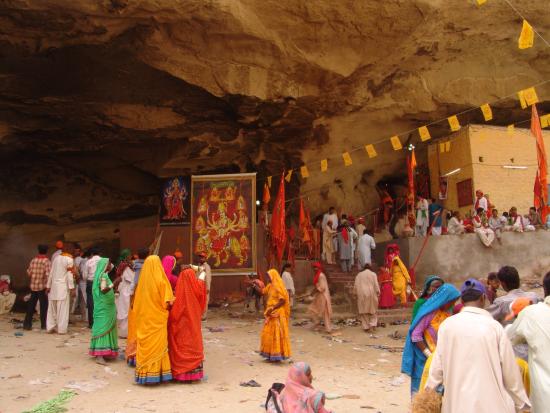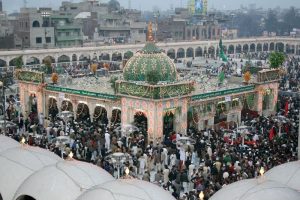Sikh Pilgrimage Tours
![nankana-sahib[1]](http://www.hkttreks.com/wp-content/uploads/2017/11/nankana-sahib1-1024x704.jpg)
The Sikh community around the world has a special place in their hearts for Pakistan. Pakistan is home to some holy places of the Sikh community. Most people of the Sikh community head to Pakistan on pilgrimage tours to various sacred destinations like Nankana Sahib, Dehra Sahib and Panja Sahib.
Nankana Sahib is one of the holiest places of the Sikh community in Pakistan. The birthplace of the founder of the Sikh faith, Nankana Sahib was earlier known as Talwandi. Every year many people visit the birth place of Guru Nanak Dev. The other places of Sikh pilgrimage in Pakistan are Kartarpur, Chuharkana and Patti Sahib
Best time to visit October to April
Trip duration 9 nights / 10 days
Transport Car, van, coaster or land cruiser
ITINERARY
The history of the Sikh religion traces its roots to a place called Nankana Sahib in Pakistan, earlier known as Talwandi. The birth place of the first Sikh guru, Guru Nanak Dev, Nankana Sahib Sheikhupura district is one of the most sacred pilgrimage sites in Pakistan. It is about 75 kilometers from Lahore . Sheikhpura district is well connec9 Night/ 10 days
Transport Car,van, Coaster or Bus
Season: November to Aprilted with rail and road with other parts of Pakistan.
It was on 15 April, 1469, Guru Nanak Dev was born here. Every year a number of pilgrims visit Nankana Sahib and other holy places associated with the first guru Guru Nanak Dev.
ITINERARY
Day 1- Arrival at Lahore airport OR at Wagha border ,transfer to the Hotel
Day 2- Full day visit to Lahore Gurdawara sahib and Chakki Sahib. Hotel B&B
Day 3 – Sightseeing Lahore Shalimar Gardens, Jahangir Tomb,Lahore Fort, Badshahi Mosque.Hotel B&B
Day 4- Full day visit to Nankana sahib and Sacha Sauda at Sheikupura. Back to Lahore Hotel. B&B
Day 5- Departure for Rawalpindi/Islamabad by road. Enroute visit Aminpura Gurdawara at Gujranwala. Overnight stay Hotel or Guest house in Islamabad. B&B
Day 6- Full day visit to Hasan Abadal Panja Sahib and back to ISB. Hotel or Guest house. B&B
Day 7- Morning Sightseeing of Isalmabad after noon shopping etc. B&B
Day 8-Leave for Lahore by Motorway Check in at Hotel in Lahore. Evening visit to Data Darbar. Hotel.B&B.
Day 9- Last day morning re visit to Gurdawara sahib and Chakki sahib Afternoon visit to the old city of Lahore to see the real life .Overnight stay in Hotel.B&B
Day 10- Trip end depart to their destinations.
Hinglaj Mata Hindu Temple / Nani Mandar

Hinglaj Mata/Nani Mandir
Hingol Located along the banks of Hingol river, in Hinglaj town in Balochistan province of Pakistan, is Hinglaj Mata Mandir. Also, called Nani mandir or Hinglaj Devi or Hingula Devi.
The steep trek to Chandergup’s rim is the first ritual of the Mata Hinglaj Yatra the holiest pilgrimage of Hindus in the world. After descending from the volcano with their faces plastered by its holy mud, the pilgrims will proceed to the main Hinglaj temple in the foothills of Kirthar mountains about 35km away.
The annual pilgrimage takes place every April in Hingol about 250km west of Karachi, from where the majority of people are coming. But most of them actually started out in Tharparkar.
The most devoted are on foot some coming from as far as Mithi and Umerkot about 550km away, taking 22 days to reach their destination. Others have hired cars and coasters. Built in 2007, the Makran Coastal Highway between Karachi and Gwadar has helped reduce the journey for many by days.
day alone considerably larger in number than last year
It is no surprise Thari women, with their trademark embroidered dresses and arms full of bangles, are in majority at the Mata Hinglaj temple. The estimated population of Hindus in Pakistan is over three million with most of them living in Tharparkar.
The festivities go on for four days with the climax on the third day when high priests chant mantras, inviting gods to accept the offerings of the devotees and bring them peace.
According to Hindu beliefs, Sati, the spouse of Shiva, burnt herself to death after her father Daksha disrespected her and did not invite her partner to a feast.
This angered Shiva who went on a rampage in the world carrying along with him Sati’s body. Vishnu then intervened and used his powers to calm Shiva down. He then cut the body of Sati into 51 pieces, which fell to earth in different places.
Giyan Maharaj, a pundit in Khipro, says these 51 places are called Shakti Peethas and became sacred places. Hindus believe the head of the goddess fell in Hinglaj, thus making it the most revered place of pilgrimage
Mystical Sufi Tours

Pakistan is a region of love and harmony with great places to explore. The specialties of this region bring a perfect reflection of how the people living in this area practice and pass on cultures and traditions from generation to generation without disrupting the values of rituals followed by their ancestors. The region is rich in all aspects and especially when it comes to explore the historical importance of Pakistan, very interesting things come to revelation for intriguing people to find out more. Pakistan being a culturally rich region, has always cared to preserve the historical places whether it is a museum, a tomb, a fort or shrines. Talking about shrines, history shows that a number of Sufi saints have served Pakistan in all parts with their message of love and harmony and to promote the Islamic values putting all of their efforts. They have devoted their lives to enlighten the souls of all the Muslims living in this region.This is a good fortune of land of Pakistan that the remains of some very famous and pious Sufi saints are resting here.Some of the most famous Sufi shrines of great saints are described here:
These shrines are not visited by Muslims only but people belonging to other religious beliefs also visit them as they think that these Sufi saints spread the message of love, peace and harmony all around and these things are not restricted to any specific religion.These tourist places are a blessing for tourists. The beauty of these shrines and the serene environment inside lets you feel to have a great mental and physical relaxation and the surroundings themselves tell you which important references of history are resting there from years.
- Shrine of Hazrat Data Ganj Bakhsh, Lahore
Abul Hassan Ali Hajveri also known as Hazrat data GanjBakhsh was a great Persian Sufi and scholar of the 11th century.He was born in 990 CE. He played a great role to spread religion all over South Asia.He travelled across Indus River to the Caspian Sea and spread the message of Islam to all the regions. He was the student of great Sufi saints. He also got educated at Junaidia School of Sufism, named after one of the great saints Junaid Baghdadi. He met a number of saints while travelling who played a great role in grooming him spiritually to spread the message of Islam in more effective way. The shrine is made into white stone beautifully designed and has poetry written at different parts. The whole shrine presents a calm and peaceful look and people come here to have satisfaction for soul.
- Shrine of Hazrat Abdullah Shah Ghazi, Karachi
Abdullah Shah Ghazi is a well- known Sufi saint whose spirits are regarded as the deterrent of cyclones in the Arabian Sea as per the beliefs of people of Karachi. He served and devoted his life to spread the message of love and peace. He was an Arab merchant and later on settled in Sindh where he learned a lot about Sufism in the company of Syed Misri Shah. He was killed by his enemies in a forest located in interior Sindh. A few of his followers brought his remains to a hill on Karachi Sea port and buried him there. It was a very small shrine which was later on reconstructed and designed as a proper Sufi shrine. By the time, a number of his followers started moving to Karachi. His shrine is now at the top of a hill in Clifton Karachi.
- Shrine of Lal Shahbaz Qalandar, Sehwan Sharif
Syed Muhammad Usman Marwandi also known as LalShahbazQalandar was born in 1177 in Iran. He was a well-known Sufi philosopher poet. He travelled all around the Muslim world and later on settled in Sehwan Sharif where his remains are now resting under a huge Shrine designed simply. During his visit to Multan, he met the great saints Baha-ud-din Zakariya, FariddudinGanjshakar and Syed JalaluddinBukhari who became good friends and all of them together joined hands to spread the message of love and harmony according to Islam in a miraculous way. The shrine was built in the year 1356 which is decorated with some titles in Sindhi. Some mirror work and gold plated door was gifted to this Shrine by Shah of Iran, Raza Shah Pahlavi. Millions of followers visit here every Thursday and on the Urs of LalShahbazQalandar
- Shrine of Hazrat Bahauddin Zakariya, Multan
Abu Muhammad BahauddinZakariya also known as HazratBahauddinZakariya was born on Friday, 4 June, 1171 in KotKehror also known as KotLalEsan, a town of Layyah District near Multan, Punjab. He devoted his whole life to spread the message of Islam all around by traveling for a period of fifteen years. Multan became his final destination and his remains are also there, resting under a beautifully designed Shrine. The strong bold pillars of the shrine are decorated with patterned lines all around. His followers come to pay visit to his shrine especially on Thursdays.
Pakistan and sufism are inter-related, inter-woven and inseparable from each other.
ME HAS STRUCK THE ARROW OF LOVE
Says Bulleh Shah, the Sufi Saint and Poet from Kasur.
Me struck by the arrow of love,
What should me, do ?
Neither— do— me— live, nor— do— me die.
Listen Ye to me!
My ceaseless – outpourings,
Me have angst, me – no peace by—the—night, nor—by day.
Me cannot live – without my love
Not for a moment.
Me struck by the arrow of love,
What should me, do ?
The seething fire
Of separation—unceasing !
Let someone take care
Of my love.
Me cannot be saved – without seeing?
Me Struck by the arrow of love,
What should me, do?
Bulleh Shah was a sufi who lived around 1680. Bulleh studied Islam and became a great scholar. However, on meeting his master, Inayat Shah he became absorbed in a passionate longing for the Divine. So great was his desire for union with God that he frequently exhibited unorthodox behaviour such as weeping openly
Itinerary
Day 01- Arrival at Karachi Airport . Afternoon visit shrines of Abdullah Shah Ghazi at Clifton. Baba Abdullah’s shrine is one of the most popular spots in Karachi. Everyday thousands of devotees visit this Tomb to offer Fateha (Prayers) regularly and is attended by scholars, mendicants, qawwals and musicians, besides thousands of devotees. Hotel
Day 02- Day trip to Thatta on the way visit Chukandi and Makli Graveyard. Makli is the largest necropolis in the world. Those lying buried in their graves have left their style and splendour behind even after their death. Most of the graves in this large necropolis date back to the time of Muhammad Bin Qasim. Also a visit to Shah Jehani Masjid, Thatta. Hotel
Day 03 – Leave for Sukkur-Enroute visit Shrine of Shah Abdul Latif Bhitai and Sehwan Sharif (Lal Shahbaz Qalandar) – Shah Abdul Latif a great Sufi poet of Sindh. Shah Abdul Latif chose to live on the sand dunes, called “Bhits” in Sindhi language at a place in between Hyderabad and Hala. Hotel in Sukkur.
Day 04 – Leave for Bahawalpur and visit Uch Sharif (Mai Jawindi). Uch is a very old town and is believed to have existed since 500 B.C. Bibi Jawindi was the daughter of Syed Jalal Sain. She was a very pious lady and highly respected by the people of the area.Hotel in Bahawalpur.
Day 05-Leave for Multan.Afternoon visit Fort and Mausoleum of Hazrat Bahauddin Zakaria and Shah Rukn-e-Alam and Hazrat Shams Tabrez. Multan is famous for its innumerable Khanqahs (Shrines) Annual Urs is held at each Khanqah (Shrine). Hotel in Multan.
Day 06 – Day trip to visit Sakhi Sarwar near Dera Ghazi Khan. Hazrat Syed Ahmed Sultan popularly known as Sakhi Sarwar (the Generous King) is buried in the town, which sprang around his tomb near Dera Ghazi Khan, 94 Km South West of Multan. He was another Sufi Saint of the Ghaznavid period. His tomb is situated near a hill stream at the foot of Sulaiman Hills. It is a beautiful building, which is always thronged by devotees. Hotel in Multan.
Day 07 – Leave for Lahore via Jhang and Faisalabad. Enroute visit the Tomb of Hazrat Sultan Bahu, the famous Sufi saint. Hotel in Lahore.
Day 08 – Full day at Lahore-visit Mausoleum of Hazrat Data Ganj Baksh (Data Darbar). He was an eminent scholar and author of many books on theology. One of his famous books is “Kashul Mahjub”. He can be described as the founder of the Sufi Cult in Punjab. His tomb in Lahore is always thronged by devotees, day and night. Lahore is called “Data Ki Nagri”, after him. Many miracles are attributed to him. It is believed that nobody has ever returned empty handed from his tomb. Also visit Tomb of Mughal Emperor. Hotel in Lahore.
Day 09 -Day trip to Qasur – visit the Tomb of Baba Bulhey Shah, one of the greatest Punjabi Sufis. Qasur is a historical city and still retains some of its ancient features. Like other Sufi poets, Baba Bulhey Shah is immensely popular amongst the masses as well as the elite. His “Kafis” are sung by singers who take great pride in reciting his poetry. Overnight stay in hotel at Lahore.
Day 10 – Leave for Islamabad,on the way visit Rohtas Fort. Hotel in Islamabad
Day 11 – Full day in Islamabad and visit Shrines of Barri Shah Latif in Islamabad. Shah Abdul Latif Kazmi known as Barri Shah Latif is considered the patron saint of Islamabad, the capital of Pakistan. It is said that he had predicted the construction of a new city near his tomb, which will be named after Islam. His tomb was built under the orders of the Mughal Emperor Aurangzeb and is situated in the village of Nurpur in the foothills of Margallas. Hotel in Islamabad.
Day 12 – Transfer to the airport
